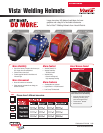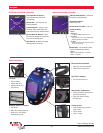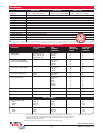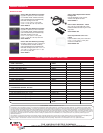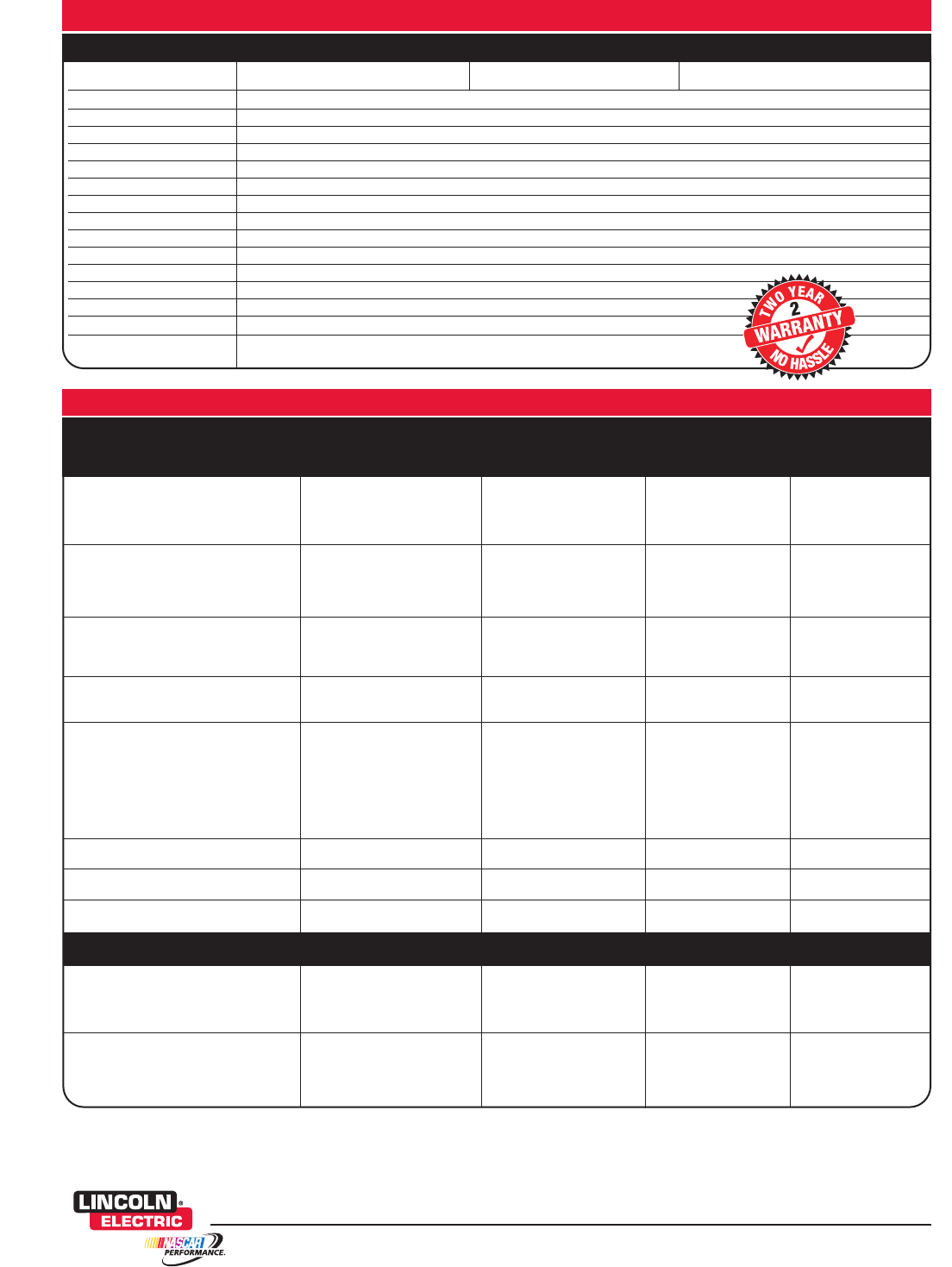
SPECIFICATIONS
Vista™ Welding Helmets
www.lincolnelectric.com
GUIDE FOR SHADE NUMBERS
VISTA
™
3000 VISTA
™
2000 VISTA
™
1000
View Size 3-7/8” x 3-1/8” (98mm x 81mm) 3-7/8” x 1-7/8” (96mm x 48mm) 3-3/4” x 1-3/8” (94mm x 35mm)
Cartridge Size 5-1/4” x 4-1/2” (133mm x 114mm)
Light to Dark Speed: 0.1 Milliseconds
Light State: 3
Dark State: 9-13
Dark to Light Delay: 0.1 & 2.0 Seconds
Variable Sensitivity: Grind/TIG
TIG Sensitivity 5 Amps
Arc Sensors: 4
Power Supply: Solar Panels
Eye Protection: EV/IR to Shade 16
Enclosure: Waterproof and Dustproof
Operating Temperature: +14° F (-10° C) to +148° F (64° C)
Storage Temperature: Room Temperature
Compliance: ANSI Z87.1, CSA Z94.3
Warranty 2 Year
OPERATION ELECTRODE SIZE ARC MINIMUM SUGGESTED
(1)
in. (mm) CURRENT PROTECTIVE SHADE NO.
(AMPERES) SHADE (COMFORT)
Shielded metal arc Less than 3/32 (2.4) Less than 60 7–
welding (SMAW) 3/32 - 5/32 (2.4–4.0) 60-160 8 10
5/32 - 8/32 (4.0–6.4) 160-250 10 12
More than 1/4 (6.4) 250-550 11 14
Gas metal arc welding (GMAW) Less than 60 7–
and flux cored arc welding (FCAW) 60-160 10 11
160-250 10 12
250-500 10 14
Gas tungsten arc welding (GTAW) Less than 50 8 10
50-150 8 12
150-500 10 14
Air carbon arc cutting (CAC-A) (Light) Less than 500 10 12
(Heavy) 500-1000 11 14
Plasma arc cutting (PAC) Less than 20 44
20-40 55
40-60 66
60-80 88
80-300 89
300-400 9 12
400-800 10 14
Torch brazing (TB) ––3 or 4
Torch soldering (TS) ––2
Carbon arc welding (CAW) ––14
PLATE THICKNESS
in. mm
Oxyfuel gas welding (OFW)
Light Under 1/8 Under 3 4 or 5
Medium 1/8 to 1/2 3 to 13 5 or 6
Heavy Over 1/2 Over 13 6 or 8
Oxygen cutting (OC)
Light Under 1 Under 25 3 or 4
Medium 1 to 6 25 to 150 4 or 5
Heavy Over 6 Over 150 5 or 6
(1)
As a rule of thumb, start with a shade that istoo dark, then go to alighter shade which gives sufficient
view of the weld zone withoutgoing below the minimum. In oxyfuel gas welding or cutting where the torch
produces a high yellowlight, it is desirable to use a filter lens that absorbs the yellow or sodium linethe
visible light of the (spectrum) operation
Shade numbers are givenas a guide only and may be varied to suit individualneeds.
[3]
Data from ANSI Z49.1-2005



